Even the most basic of users know that USB 3.0 brings significant data transfer speed increase compared to its predecessor USB 2.0. It is estimated that up to 70 percent of computers will support USB 3.0 by the end of 2012, while full adoption is expected by the end of 2014. New USB external devices won't really take over quickly, but it is widely expected that they will at least match their predecessors in number in 2015. When it comes to USB 3.0 external enclosures, the offer is quite rich.
Akasa's integral S 3.5'' is one of the first drives that offered USB 3.0. Although launched more than a year ago, it's still the company's top product. As you can see, it's available in piano black and silver.
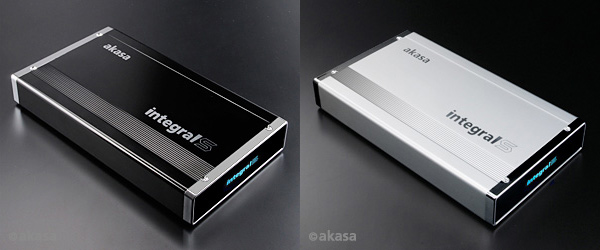
The box has the same layout and it's tough, just like the packaging for the rest of Akasa's drives. There is a picture of the device on the front and the box highlights the fact USB 3.0 allows for ten times faster data transfer than USB 2.0. There's other info on the back in several languages, where we read that Integral S is suitable for all 3.5'' SATA hard drives.



We found a manual in the box, which has plenty of pictures showing how to place the drive in the enclosure. There's also a DC12V adapter, USB 3.0 cable and four screws. Integral S also comes with a stand, if you like to place it vertically.

Integral series of external 3.5'' enclosures is well known for its tough and durable aluminum case that also helps the drive cool better. In fact, the enclosure looks almost identical to the older integral P2SATA. The only difference is the I/O panel and the actual connector.
The stand is identical as well.
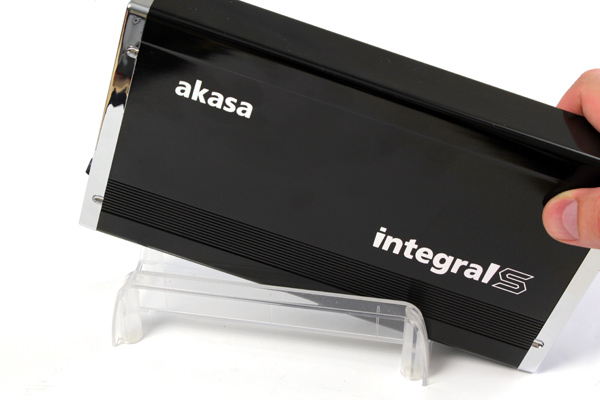
Integral S is only 3cm thick, but almost 22cm long (3.5'' drive is about 14,5cm long).
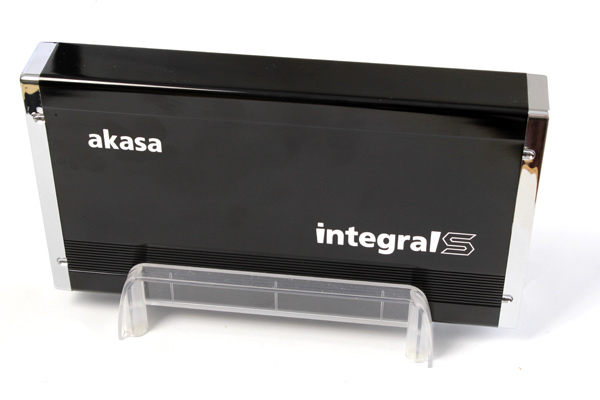
The enclosure has small rubber feet that prevent vibration and resulting noise. They also prevent the enclosure from sliding across the table.
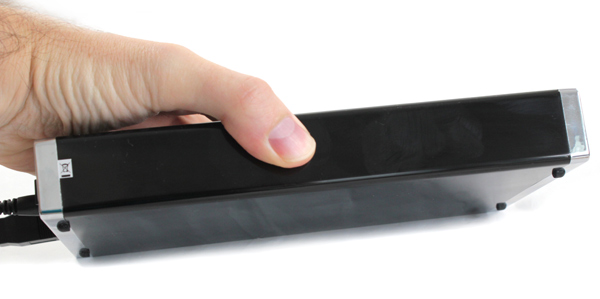
If you look closely, you'll see that that Akasa left four small holes on top of the enclosure in order to make the drives stackable.
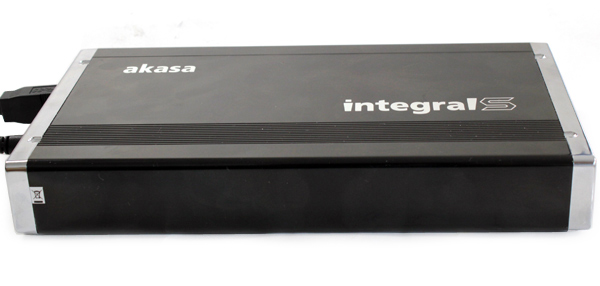
The shorter sides of integral S enclosure are made of tough plastic, although it looks as if it's they're chrome plated. The I/O panel holds a standard, blue USB 3.0 connector, power DC12V connector and the ON/OFF switch.
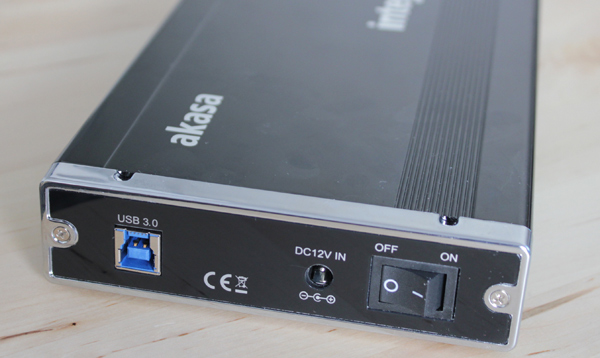
Integral S logo on the front glows blue when the drive is on.
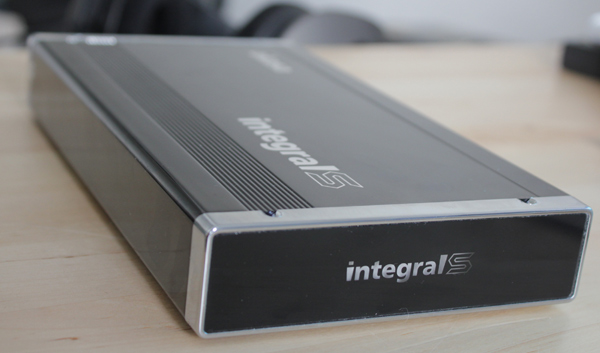
Mounting a 3.5'' drive in integral S isn't hard. First thing we need to do is take off the I/O panel, which is held by two screws. Note that you shouldn't apply too much pressure when putting the screws back in, in order not to damage the threads.
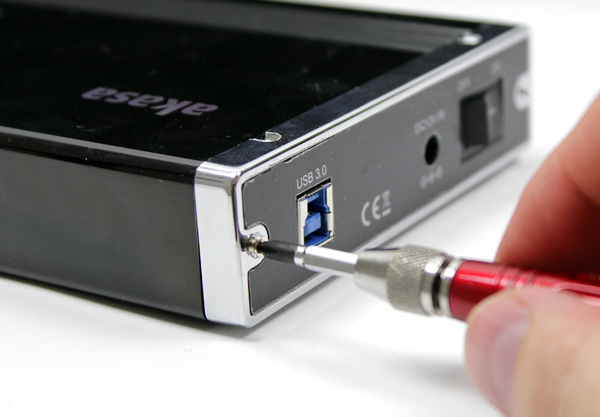
The I/O panel acts as a bracket for drives and it must be taken out and strapped with a drive of choice. Note that although the enclosure isn't made for 2.5'' drives, users could still use it if they improvised.
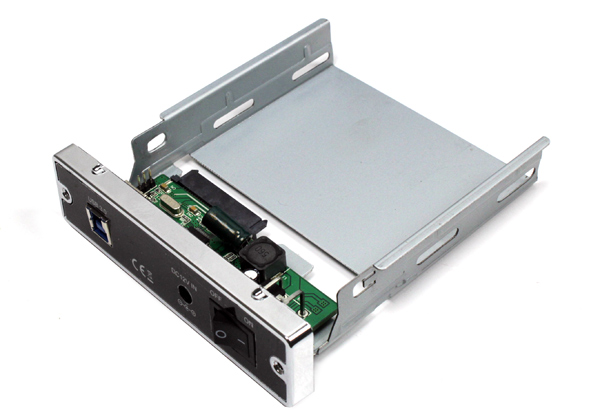
Setting the drive up was a breeze - SATA and power connectors were ready so all we had to do was put it back inside. Akasa opted for PL2771 SuperSpeed USB 3.0 to SATA II Bridge Controller.
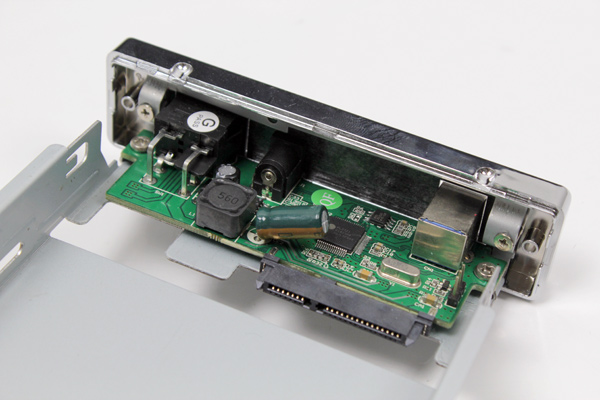
For our testing, we used a brand new WD Red HDD 3TB drive.
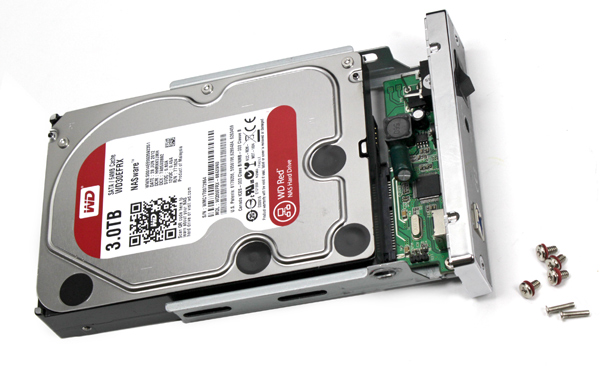
When putting the bracket back in, you should watch out for LED cabling.
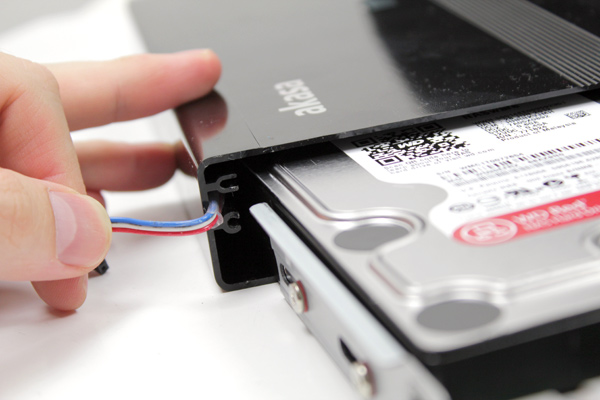
You'll have to reconnect the LED cable before sliding the drive fully into place.
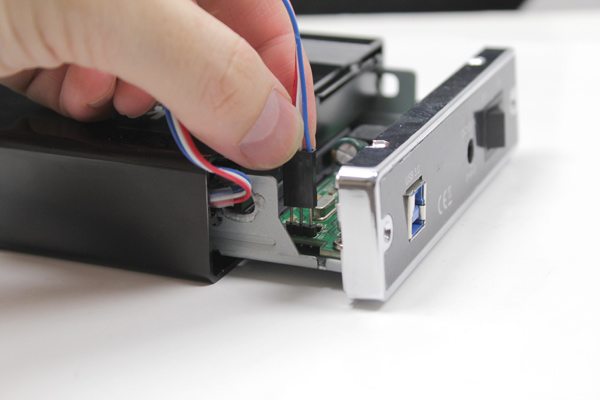
The power cable is about 180cm long. The adapter isn't large and it will be easy to carry around, as opposed to the older integral P2SATA adapter. The picture on the left shows integral P2SATA's adapter, while the right one shows integral S'.
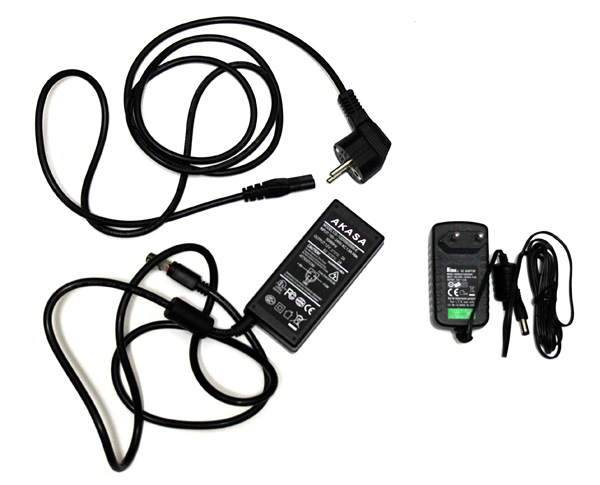
Once the disk is on, the logo glows blue.

Once the HDD is doing something, you should see it from the changes in logo lighting. However, it's impossible to tell exactly, even in complete darkness, because we're talking about very slight changes. Once we thought about it, it's probably god that the light isn't very obvious, because it would probably constantly draw attention to itself. It would be good if there was a smaller HDD indicator lamp on the I/O panel though.
The aluminum case is pretty scratch resistant. A clear proof of that is our old integral P2SATA case, picture below, which barely has visible scratches after few years of carrying around.
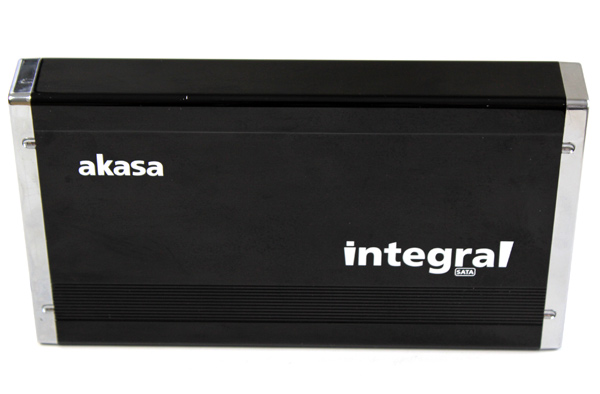
Users may have to watch the rubber feet though because although they're glued well, they may come off when tumbling around in a bag. After a few years of use, we have no idea where our Integral P2SATA's feet were lost. Perhaps it would be good if Akasa shipped a few spares in the box.
One of the cool things with integral cases is that they're stackable. The rubber feet fit into holes on top, which makes a nice and vibration free stack.
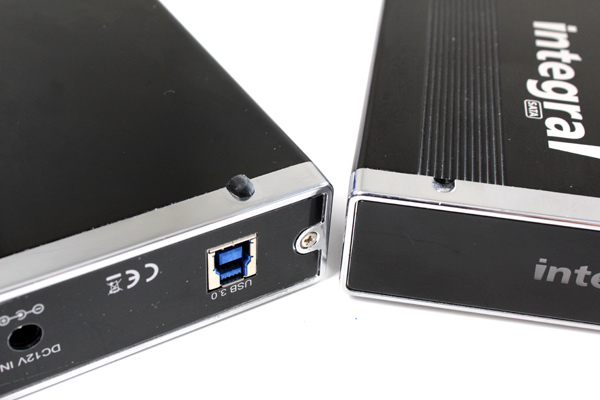
Integral S is only slightly longer than the integral P2SATA case. We noticed this when we tried to stack our integral P2SATA - it was possible, but not exactly a perfect fit.
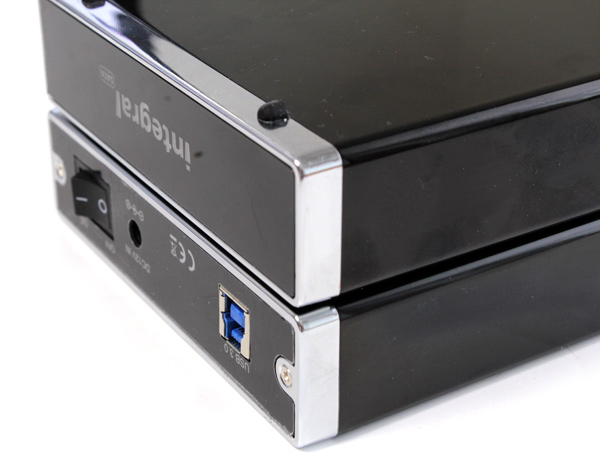
Problems with dust and fingerprints cannot be avoided with piano black aluminum surface. Good thing is that it can be cleaned easily.
The stand is stable and also comes with rubber feet. We weren't particularly impressed with the stand, but it does what it does well.
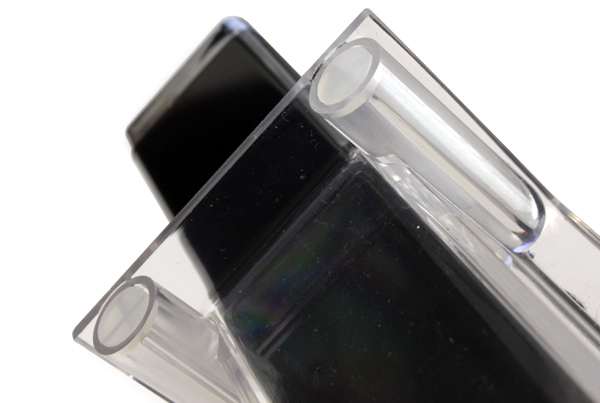
The stand is quite stable and the case is easily removed and put back.

We put a fresh, formatted WD Red 3TB drive into the Integral S enclosure and got to work right away. USB 3.0 theoretically offers ten times faster transfer speeds than USB 2.0 but our testing showed only a 4x increase. Of course, this largely depends on the kind of drive you use and it's probably SSD drives that will show the real speed increase of USB 3.0. Atto Disk Benchmark shows that USB 3.0 connection in this case was 4x faster than USB 2.0-.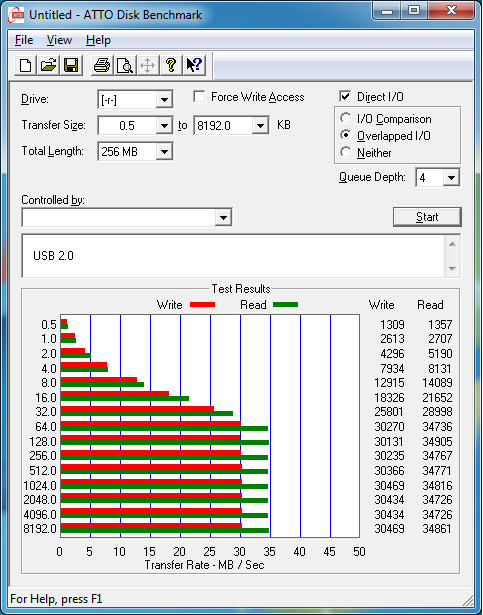
USB 2.0 score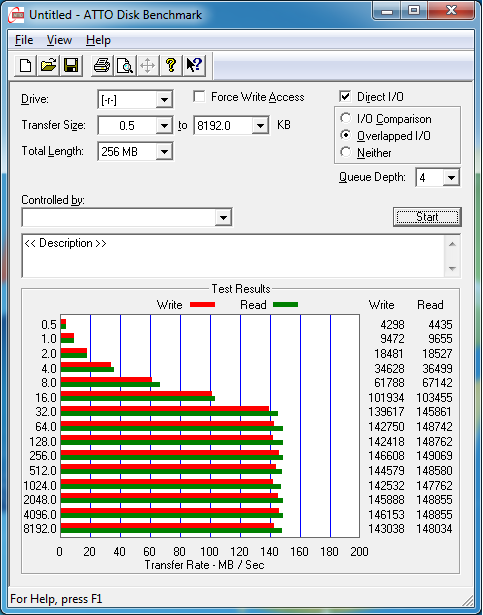
USB 3.0 score
Atto says performance is slightly better once our WD Red 3TB HDD is in the PC and connected to a SATA 6G controller. Note that performance is much better in the first part of our testing with smaller files, whereas working with larger files ran about the same.
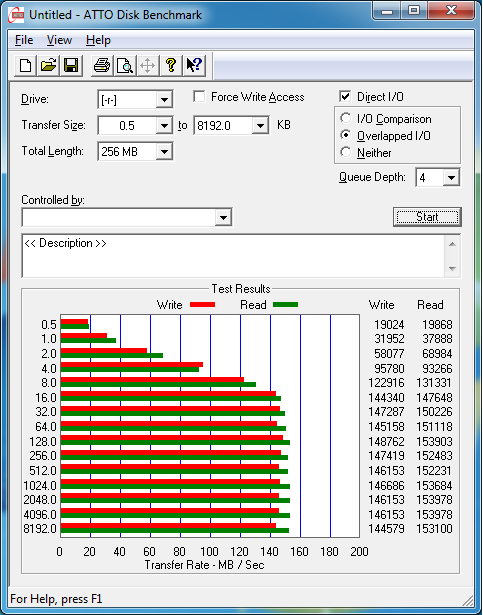
SATA 6GB
There are several reasons why chose Akasa's Integral S enclosures - for starters, they offer USB 3.0. However, the enclosures also boast thick and tough aluminum that also cools helps cool the drive inside. The enclosures support all capacities and with such sleek looks, Integral S caters to just about anyone.
Integral S enclosures go for €45-€50 in the EU. Naturally, the competition isn't idle and there are many affordable external USB 3.0 enclosures for 3.5'' drives to be found. USB 3.0 may be a good reason to buy a new enclosure but you may want to consider where you'll be using it firs. Namely, USB 3.0 is still far from being a standard feature, but there's no need to worry either because it's backwards compatible with USB 2.0. Anyhow, buying a USB 3.0 enclosure is certainly a safe investment and Akasa's Integral S USB 3.0 enclosures are definitely worth looking at.

